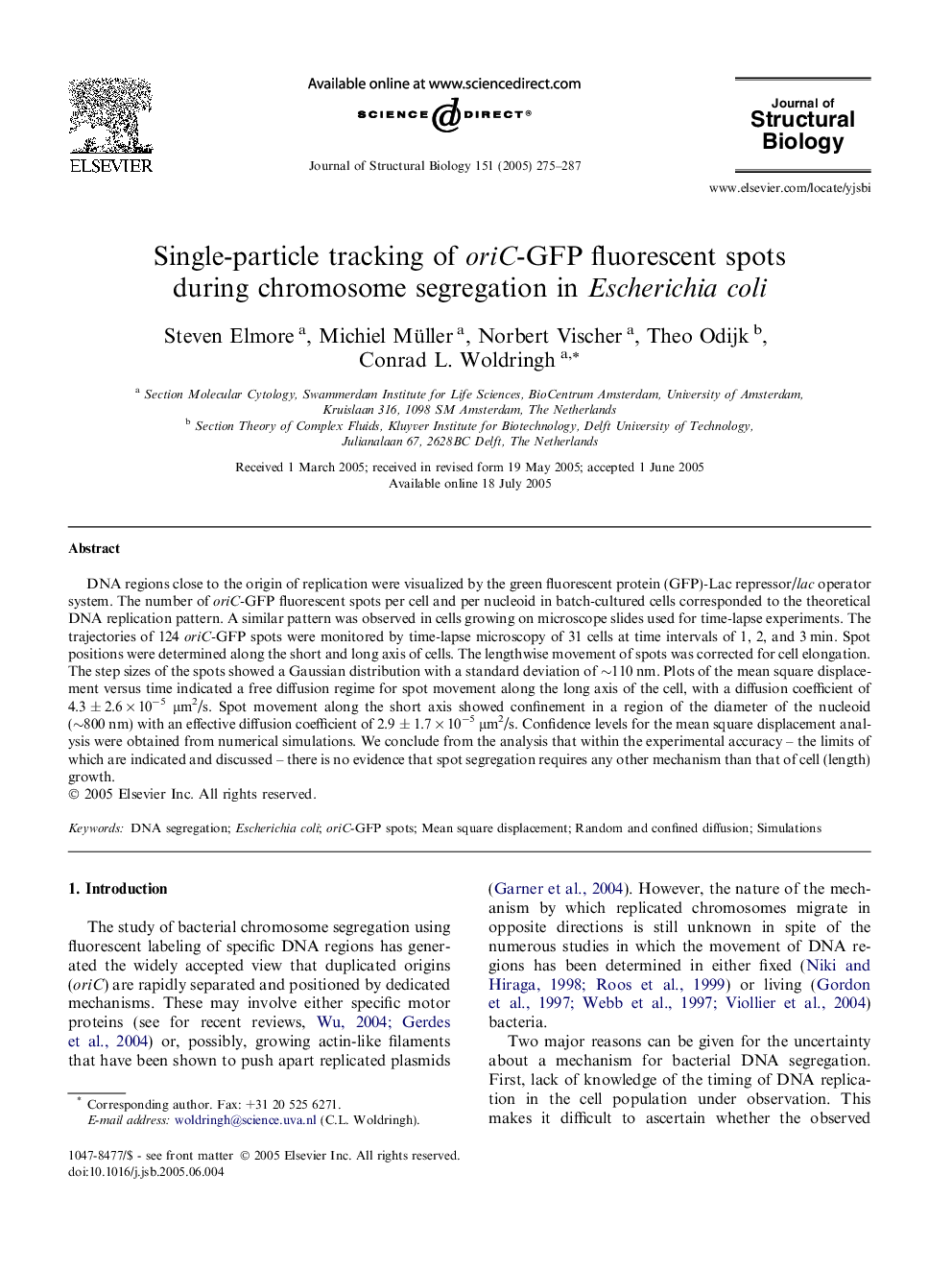| Article ID | Journal | Published Year | Pages | File Type |
|---|---|---|---|---|
| 9138962 | Journal of Structural Biology | 2005 | 13 Pages |
Abstract
DNA regions close to the origin of replication were visualized by the green fluorescent protein (GFP)-Lac repressor/lac operator system. The number of oriC-GFP fluorescent spots per cell and per nucleoid in batch-cultured cells corresponded to the theoretical DNA replication pattern. A similar pattern was observed in cells growing on microscope slides used for time-lapse experiments. The trajectories of 124 oriC-GFP spots were monitored by time-lapse microscopy of 31 cells at time intervals of 1, 2, and 3 min. Spot positions were determined along the short and long axis of cells. The lengthwise movement of spots was corrected for cell elongation. The step sizes of the spots showed a Gaussian distribution with a standard deviation of â¼110 nm. Plots of the mean square displacement versus time indicated a free diffusion regime for spot movement along the long axis of the cell, with a diffusion coefficient of 4.3 ± 2.6 Ã 10â5 μm2/s. Spot movement along the short axis showed confinement in a region of the diameter of the nucleoid (â¼800 nm) with an effective diffusion coefficient of 2.9 ± 1.7 Ã 10â5 μm2/s. Confidence levels for the mean square displacement analysis were obtained from numerical simulations. We conclude from the analysis that within the experimental accuracy - the limits of which are indicated and discussed - there is no evidence that spot segregation requires any other mechanism than that of cell (length) growth.
Related Topics
Life Sciences
Biochemistry, Genetics and Molecular Biology
Molecular Biology
Authors
Steven Elmore, Michiel Müller, Norbert Vischer, Theo Odijk, Conrad L. Woldringh,
